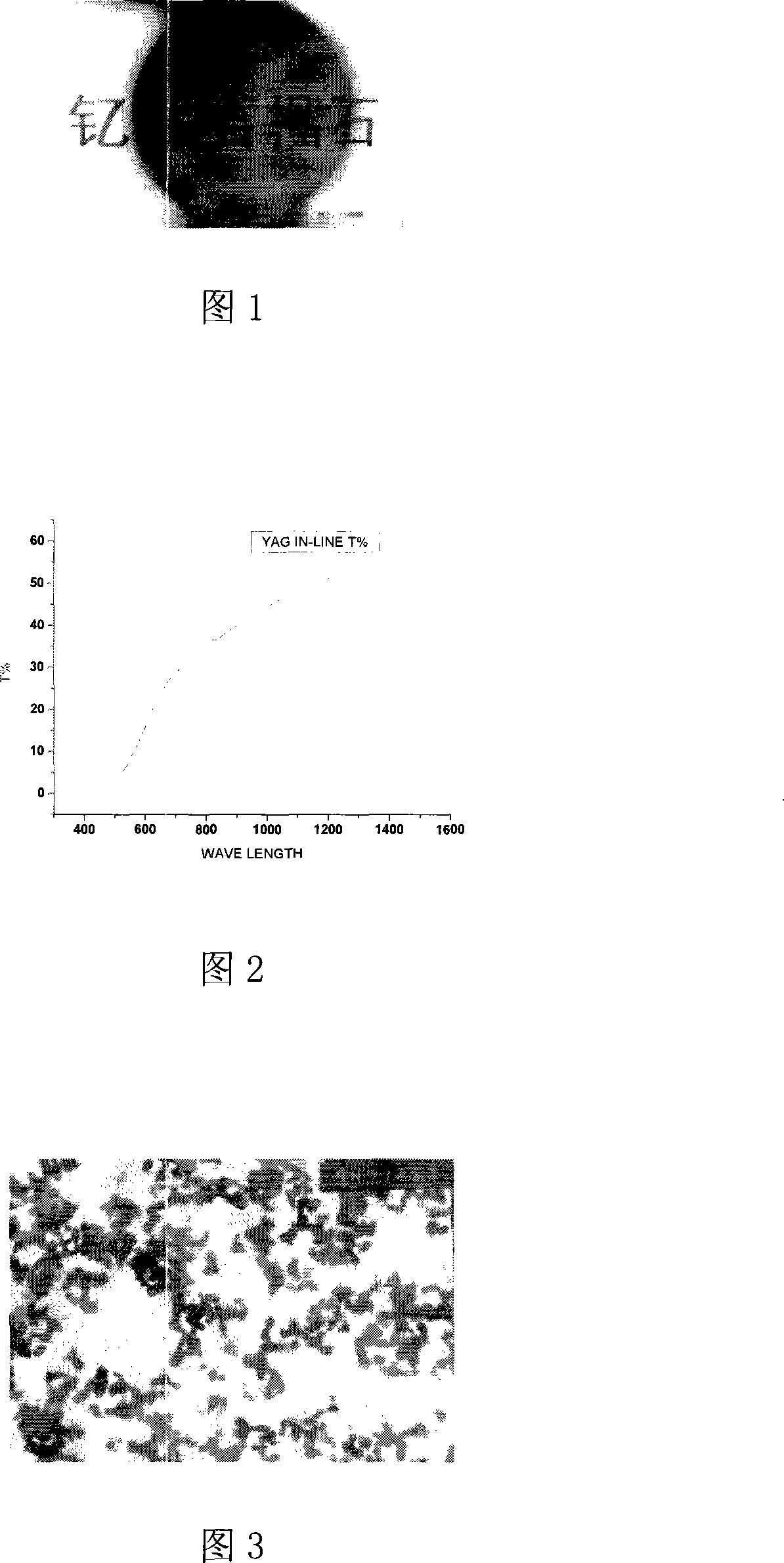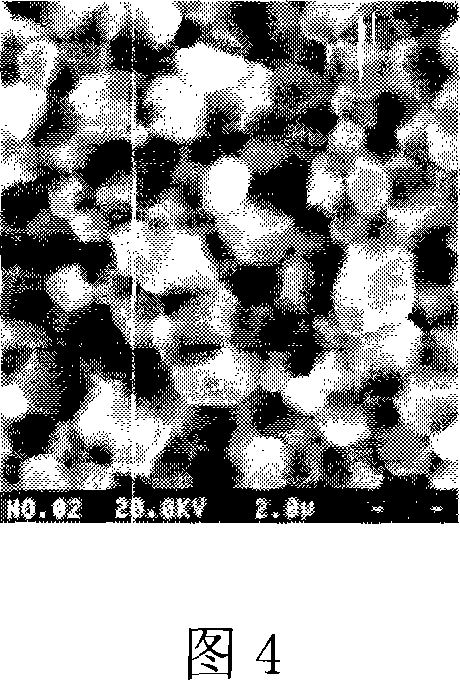Yttrium-aluminium series small crystal transparent ceramic material and preparation method
A technology of transparent ceramics and small grains, which is applied in the field of yttrium aluminum series small grain transparent ceramic materials and preparation, can solve the problems of lack of, lack of preparation of non-cubic phase single-phase transparent ceramic materials, etc.
- Summary
- Abstract
- Description
- Claims
- Application Information
AI Technical Summary
Problems solved by technology
Method used
Image
Examples
Embodiment 1
[0043] Taking near-stoichiometric ratio YAG as an example, the near-stoichiometric ratio YAG nano-transparent ceramics were prepared with high-purity (99.99%) YAG 2 o 3 and Al(NO 3 ) 3 For the raw material. Will Y 2 o 3 Dissolve in nitric acid to give Y(NO 3 ) 3 solution. Al(NO 3 ) 3 Al(NO) directly dissolved in deionized water 3 ) 3 solution. Mix the two solutions in proportion to obtain the original solution. Drop the prepared solution into dilute ammonia water and add ammonia water to maintain a constant pH value, control the pH value to 7 or 8, and obtain a precursor precipitate. Suction filter the precipitate, wash with water and ethanol repeatedly, and dry at 90°C. Grind the dried precursor through a 200-mesh sieve, and then calcinate at 950°C to obtain a powder. The powder is sintered in an SPS sintering furnace, the powder is loaded into a graphite mold, the mold is placed in the SPS furnace, a certain pressure is first applied, and then a pulse current ...
Embodiment 2
[0045] Taking near-stoichiometric ratio YAG as an example, the near-stoichiometric ratio YAG nano-transparent ceramics were prepared with high-purity (99.99%) YAG 2 o 3 and Al(NO 3 ) 3 For the raw material. Will Y 2 o 3 Dissolve in nitric acid to give Y(NO 3 ) 3 solution. Al(NO 3 ) 3 Al(NO) directly dissolved in deionized water 3 ) 3 solution. Mix the two solutions in proportion to obtain the original solution. Add 0.5wt% glycine to the prepared solution, and then burn it. The precursor obtained by combustion was ground through a 200-mesh sieve, and then calcined at 950°C to obtain a powder. The powder morphology is shown in Figure 3. The powder is formed by dry pressing and isostatic pressing, and then sintered in hydrogen. The sintering temperature is 1800°C-6H. Prepare transparent ceramics.
Embodiment 3
[0047] Taking near-stoichiometric ratio YAG as an example, the near-stoichiometric ratio YAG nano-transparent ceramics were prepared with high-purity (99.99%) YAG 2 o 3 and Al(NO 3 ) 3 For the raw material. Will Y 2 o 3 Dissolve in nitric acid to give Y(NO 3 ) 3 solution. Al(NO 3 ) 3 Al(NO) directly dissolved in deionized water 3 ) 3solution. Mix the two solutions in proportion to obtain the original solution. Spray the prepared solution into a calciner at 950°C with an ultrasonic spray device to prepare a powder, and then undergo heat treatment to obtain a powder. The powder is formed by dry pressing and isostatic pressing, and then sintered in vacuum. The sintering system adopts a two-step method. The temperature is raised to 1800°C within 5H and then cooled to 1600°C for 10H. Prepare transparent ceramics.
PUM
| Property | Measurement | Unit |
|---|---|---|
| size | aaaaa | aaaaa |
| particle size | aaaaa | aaaaa |
Abstract
Description
Claims
Application Information
 Login to View More
Login to View More - R&D
- Intellectual Property
- Life Sciences
- Materials
- Tech Scout
- Unparalleled Data Quality
- Higher Quality Content
- 60% Fewer Hallucinations
Browse by: Latest US Patents, China's latest patents, Technical Efficacy Thesaurus, Application Domain, Technology Topic, Popular Technical Reports.
© 2025 PatSnap. All rights reserved.Legal|Privacy policy|Modern Slavery Act Transparency Statement|Sitemap|About US| Contact US: help@patsnap.com


